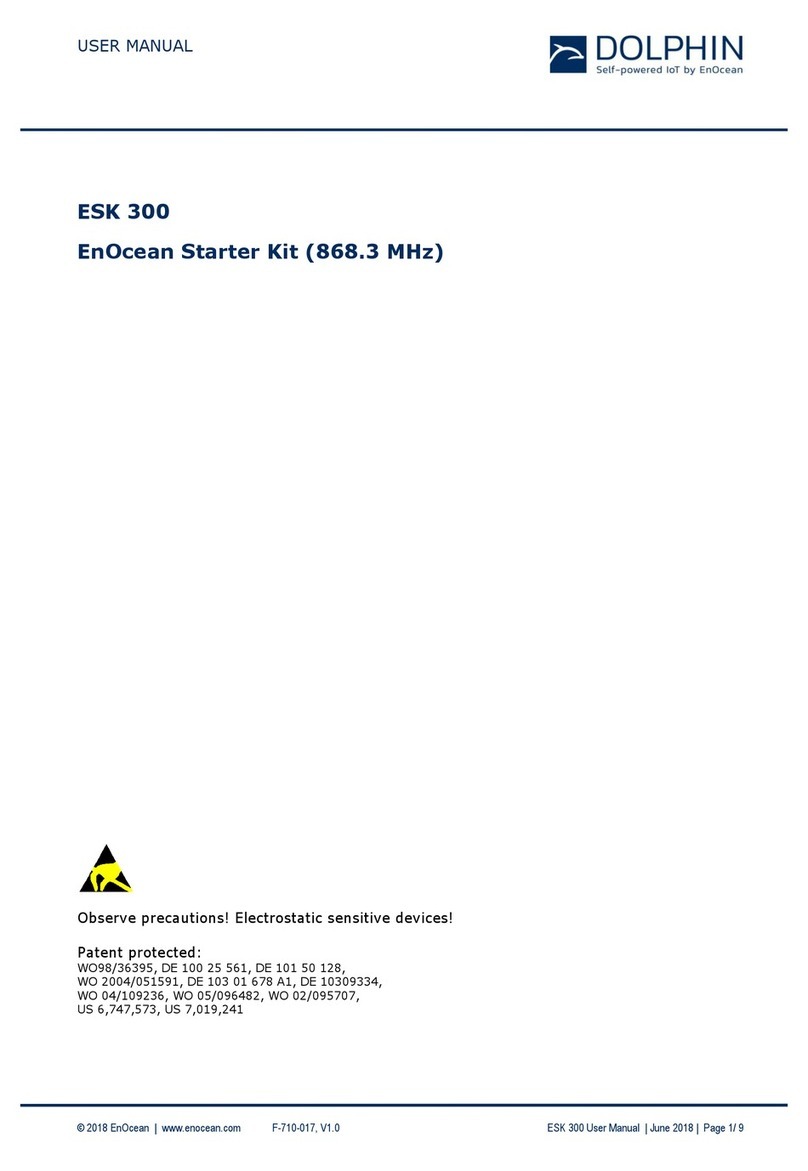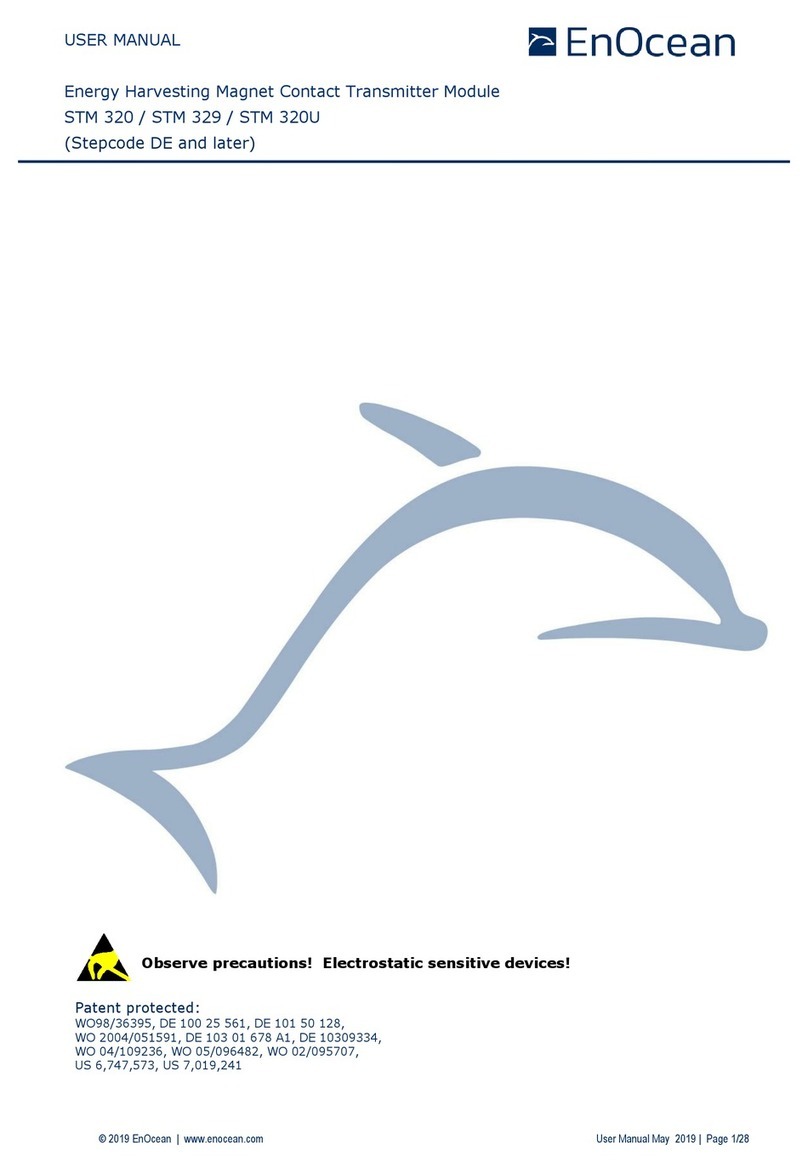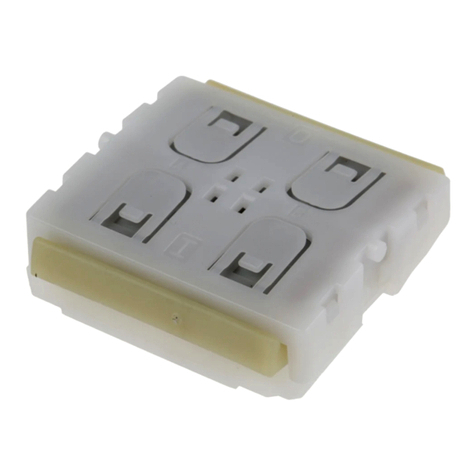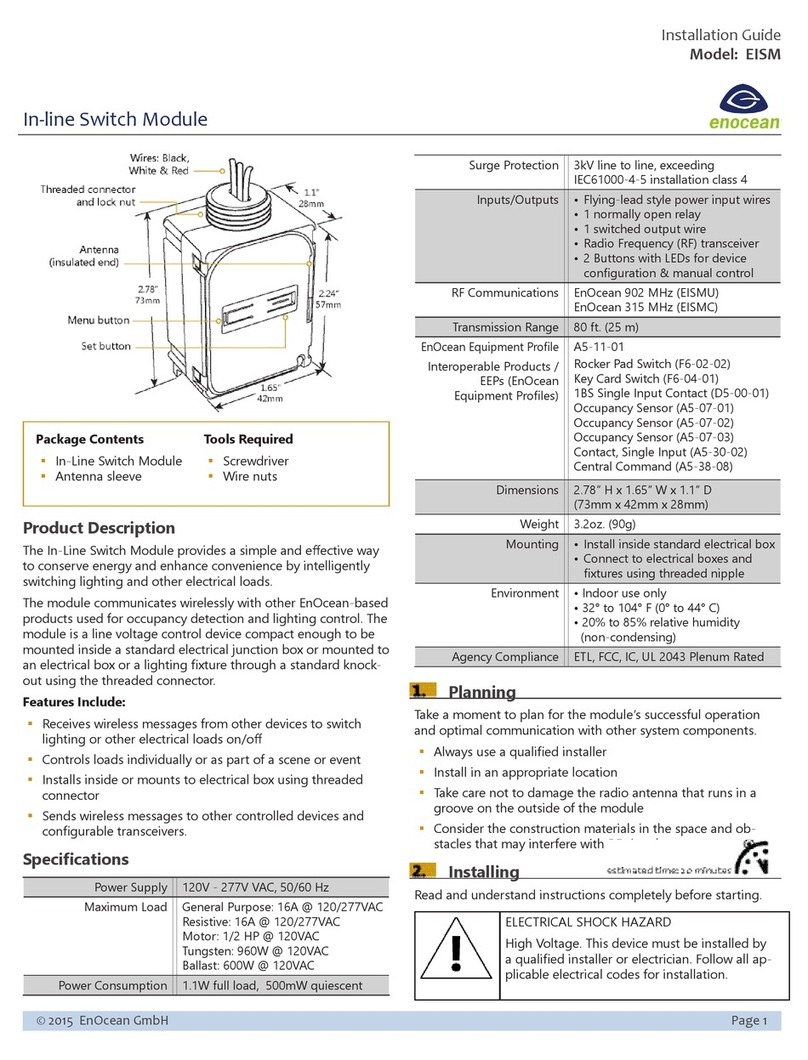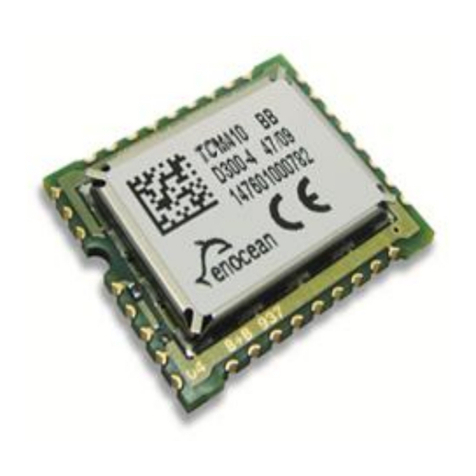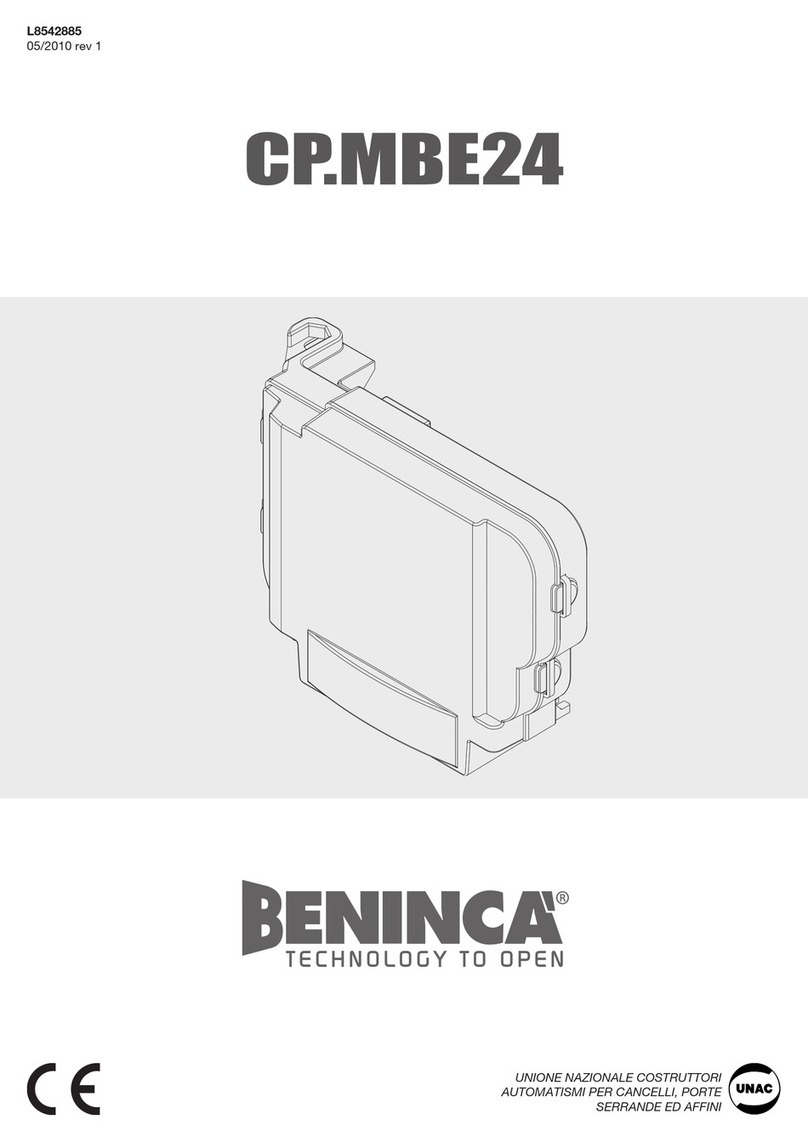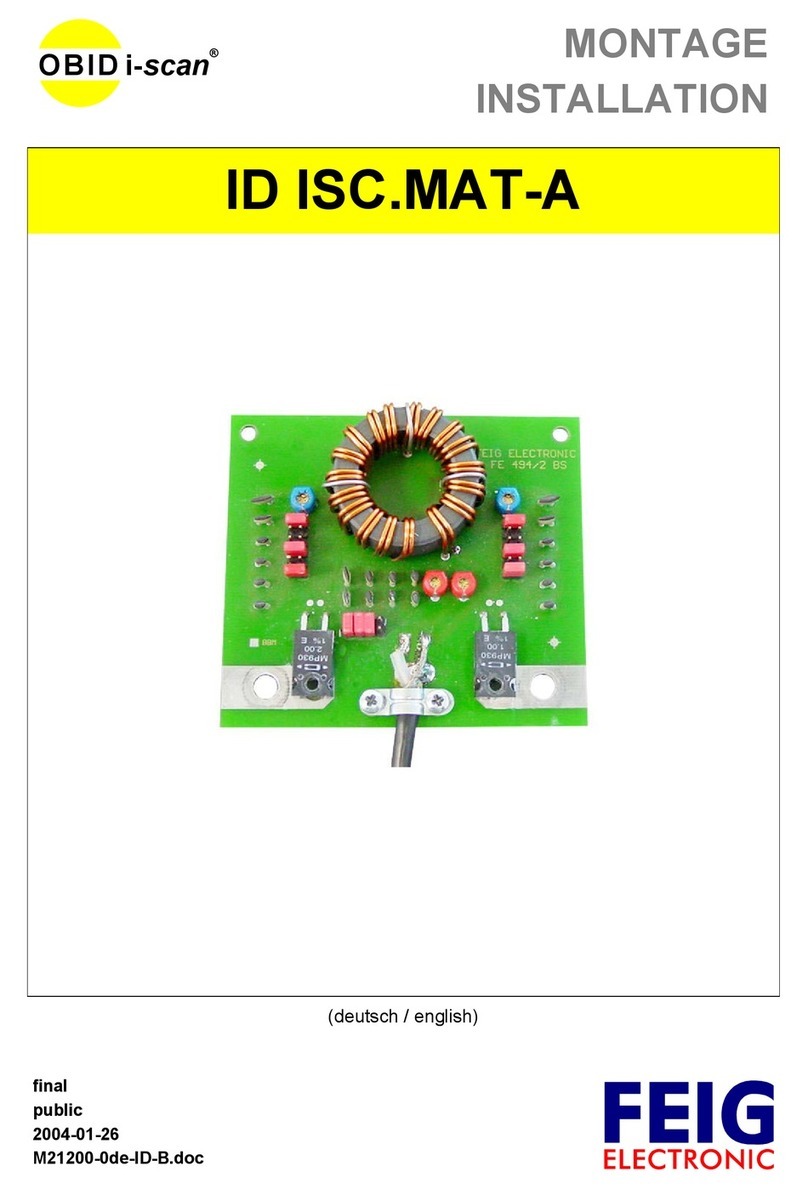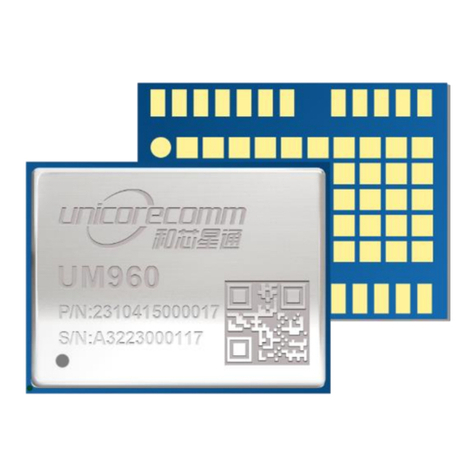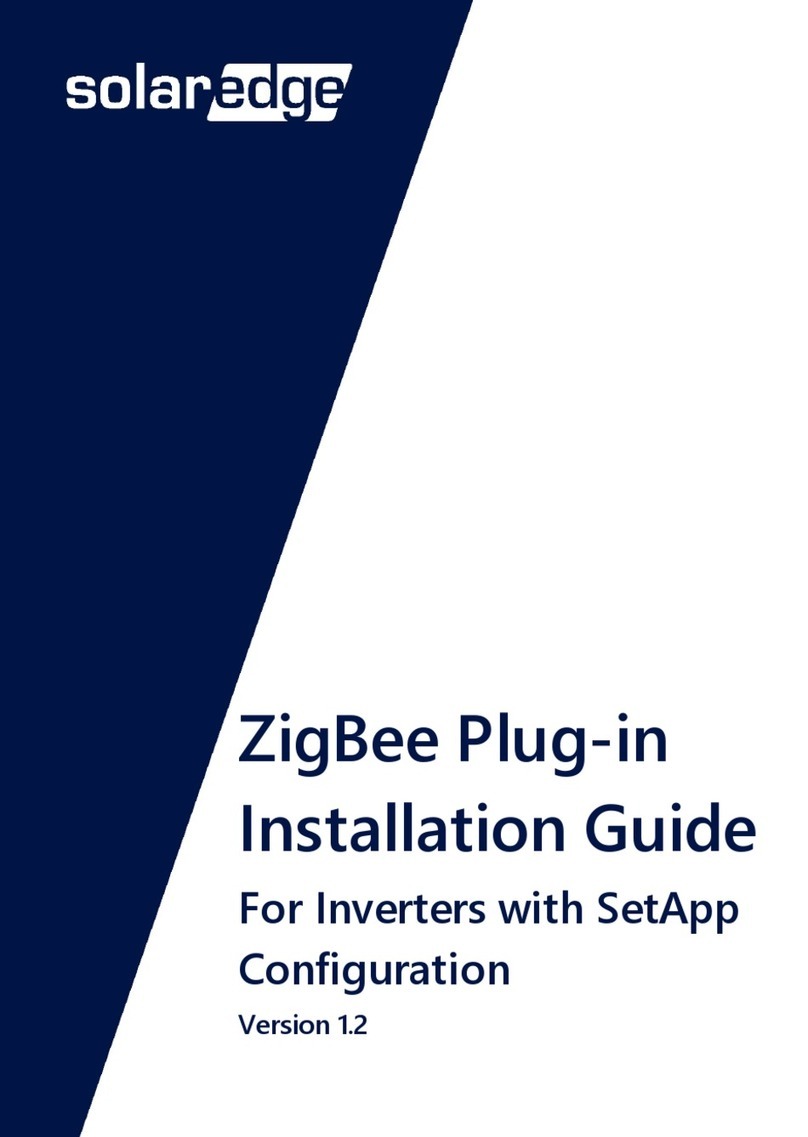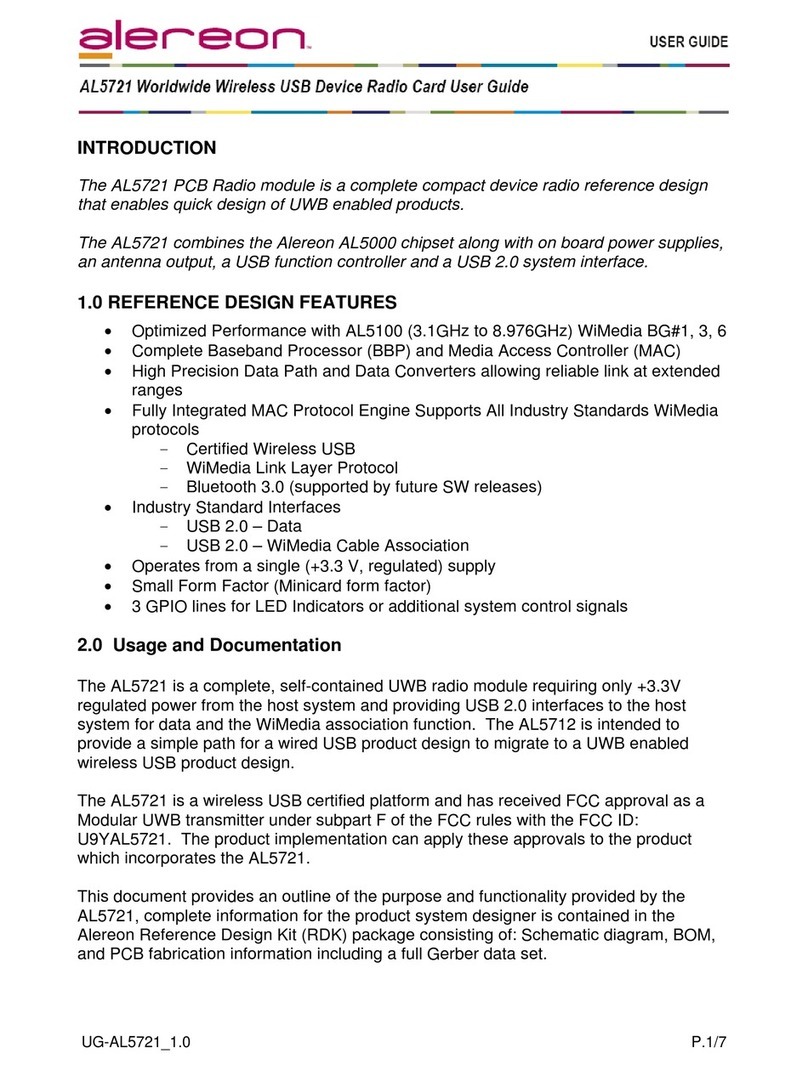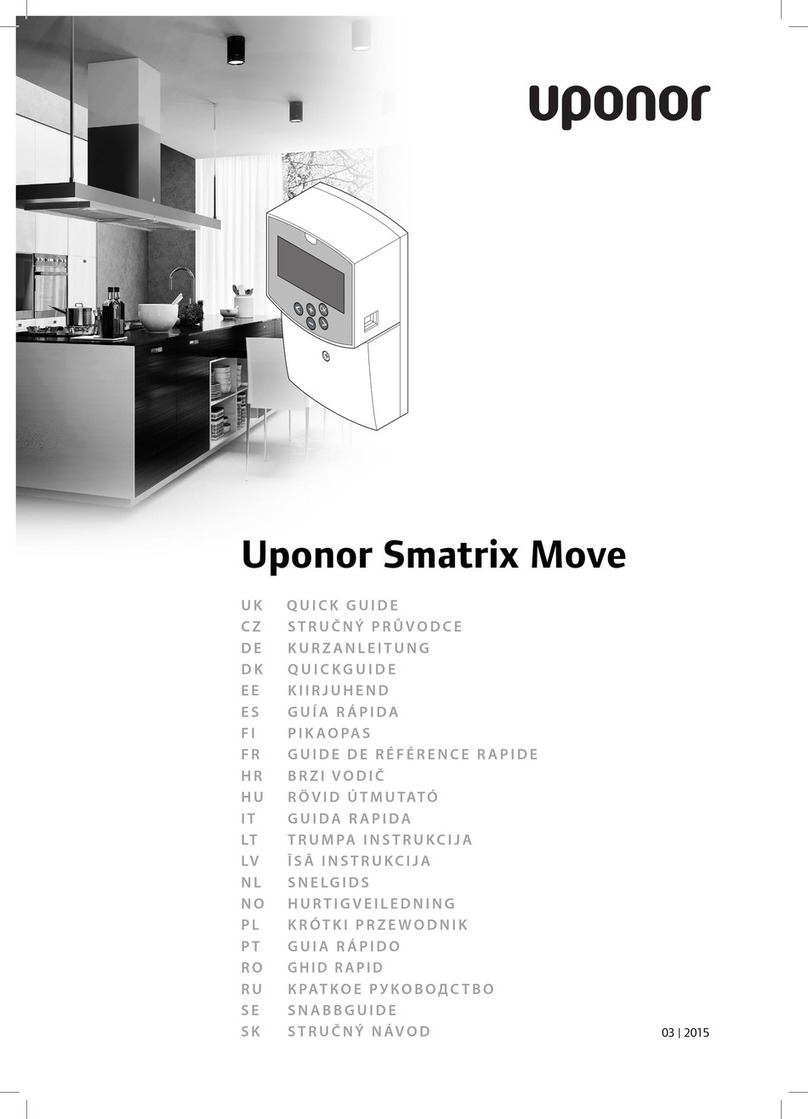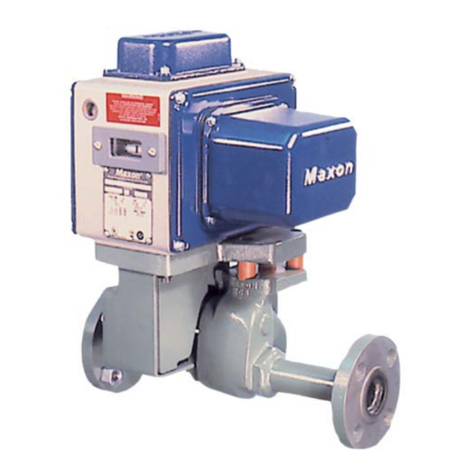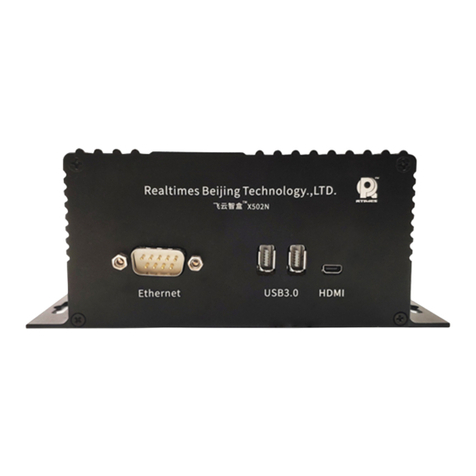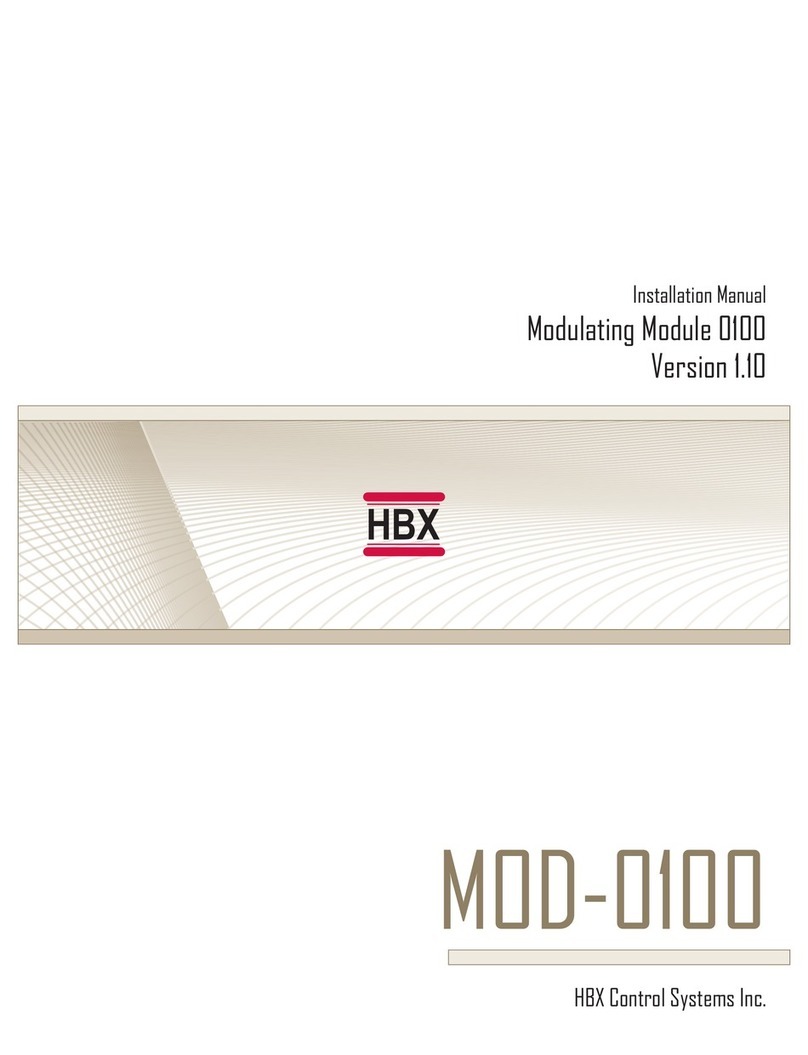EnOcean RCM 110 User manual

RF Receiver Modules
RCM 110 and RCM 120
User Manual V1.93
April 2007

Revision History
The following major modifications and improvements have been made to the initial version of
the document (RCM 110/120 User Manual V1.0):
Version Subject (major changes since last version)
V1.1 No major changes
V1.2 Chapter 4 added “Development Tools”
V1.3 Chapter 2.10: Adjustment of RSSI output characteristics
V1.4 Chapter 3.8: Watchdog application note added for RCM 120 operating mode 1
V1.5
Chapter 2.3: Error in output naming of RCM110 Modus 5 corrected (Out_0 and
Out_1 are active in this mode, not Out_0 and Out_2)
V1.6
• Chapter 2.4: Application note added for teach-in function of Serial Interface
• Chapter 2.5.3: Note added for H_SEQ, that RID is checked additionally for
known/unknown decision
• Revision of chapter 3.2 “Antenna Mounting”
• Revision of chapter 3.9 “Approval Requirements”
• Supplementation of chapter 5 “Declaration of Conformity”
V1.7
• Chapter 2.5.5: Application note added for systems using a radio repeater
• Chapter 3.7: Note added for the realization of a physical RS232 interface
V1.8
• Chapter 2.5: Timing diagram complemented for serial mode
• Chapter 2.5.6: Field BUTTONS defined for PTM200
• Chapter 3.3: Transmission range described in more detail
• Chapter 3.10: FCC/IC Approval Requirements added
• Chapter 4.1: US version of Evaluation Kit added
V1.9 • Current consumption and supply voltage range corrected
V1.91 • Serial telegram timing corrected
V1.92 • Application note added: RCM open collector outputs and how to connect them;
power supply requirements modified
V1.93 • H_SEQ information in 2.5.3 clarified; antenna drawing corrected
Published by EnOcean GmbH, Kolpingring 18a, 82041 Oberhaching, Germany
www.enocean.com, [email protected], phone ++49 (89) 6734 6890
© EnOcean GmbH, All Rights Reserved
Important!
This information describes the type of component and shall not be considered as assured characteristics. No
responsibility is assumed for possible omissions or inaccuracies. Circuitry and specifications are subject to change
without notice. For the latest product specifications, refer to the EnOcean website: http://www.enocean.com.
As far as patents or other rights of third parties are concerned, liability is only assumed for modules, not for the
described applications, processes and circuits.
EnOcean does not assume responsibility for use of modules described and limits its liability to the replacement of
modules determined to be defective due to workmanship. Devices or systems containing RF components must meet
the essential requirements of the local legal authorities. The approval requirements described in this document are of
best knowledge without any warranty.
The modules must not be used in any relation with equipment that supports, directly or indirectly, human health or life
or with applications that can result in danger for people, animals or real value.
Components of the modules are considered and should be disposed of as hazardous waste. Local government
regulations are to be observed.
Packing: Please use the recycling operators known to you. By agreement we will take packing material back if it is
sorted. You must bear the costs of transport. For packing material that is returned to us unsorted or that we are not
obliged to accept, we shall have to invoice you for any costs incurred.
©EnOcean GmbH, A. Anders / W. Heller
Page 2 of 33
RCM 110/120 User Manual V1.93

Table of Contents
1. GENERAL DESCRIPTION________________________________________________________________ 4
1.1 Basic Functionalities ________________________________________________________________ 4
1.2 Typical Applications _________________________________________________________________ 5
1.3 Features Overview __________________________________________________________________ 5
1.4 Physical Dimensions ________________________________________________________________ 5
1.5 Environmental Conditions __________________________________________________________ 6
1.6 Ordering Information _______________________________________________________________ 6
2. FUNCTIONAL DESCRIPTION ___________________________________________________________ 7
2.1 Block Diagram _______________________________________________________________________ 7
2.2 Pin Description ______________________________________________________________________ 7
2.3 RCM 110 Operating Modes_________________________________________________________ 10
2.4 RCM 120 Operating Modes_________________________________________________________ 12
2.5 RCM 120 Serial Interface (Operating Mode 0) ___________________________________ 15
2.6 Learning Modes ____________________________________________________________________ 20
2.7 Learning of Radio Transmitters ___________________________________________________ 20
2.8 Deleting Radio Transmitters_______________________________________________________ 22
2.9 RCM 110 Scene Selection Control _________________________________________________ 23
2.10 Received Signal Strength Indicator (RSSI) _____________________________________ 24
2.11 Demodulated Direct Signal Output (RxD) _______________________________________ 24
3. APPLICATIONS INFORMATION _______________________________________________________ 25
3.1 Module Mounting ___________________________________________________________________ 25
3.2 Antenna Mounting__________________________________________________________________ 25
3.3 Transmission Range _______________________________________________________________ 27
3.4 Power Supply Requirements ______________________________________________________ 28
3.5 LMI Output Connection ____________________________________________________________ 28
3.6 Note to RCM 110 Mode 5 (Dimming) ______________________________________________ 29
3.7 Notes to RCM 120 Mode 0 (Serial Data Communication) ________________________ 29
3.8 Time-Out Recommendation concerning RCM 120 Mode 1 (Pushbutton)________ 29
3.9 CE Approval Requirements ________________________________________________________ 30
3.10 FCC/IC Approval Requirements__________________________________________________ 30
3.11 Connecting Open Collector Outputs _____________________________________________ 30
4. DEVELOPMENT TOOLS_________________________________________________________________ 32
4.1 Evaluation Kit EVA 100/105 _______________________________________________________ 32
4.2 Field Intensity Meter EPM 100 ____________________________________________________ 32
5. DECLARATION OF CE CONFORMITY __________________________________________________ 33
©EnOcean GmbH, A. Anders / W. Heller
Page 3 of 33
RCM 110/120 User Manual V1.93

1. GENERAL DESCRIPTION
The multifunctional receiver modules RCM 110 and RCM 120 are used to receive and to
process telegrams generated and transmitted by EnOcean radio transmitters. These modules
can be easily integrated into control and switching units for the implementation of different
application-specific system solutions.
1.1 Basic Functionalities
For the implementation of different application-specific system solutions the RCM radio
modules can be easily integrated into control and switching units by using the functional
control outputs (“open collector”).
Serial Data Communication via Receiver Module RCM 120 (all EnOcean RF signals):
• Serial data link from all radio signals transmitted from PTM, STM, TCM and CTM radio
modules (9600 bps, 1 start bit, 1 stop bit)
• This interface enables a simple realization of a Gateway to existing control and
monitoring systems
• This interface enables any desired actor functionality by the user, e.g. by
connecting to a following microcontroller (the output control logic can be
easily and flexible programmed by the user)
RCM 110 output switching functionalities (controlled by PTM radio signals):
• Basic signal output functions “switching” (On/Off): 1, 2 or 4 channels
• Basic signal output function “dimming”: On/Off (pushbutton operated quickly) and PWM
50 kHz (pushbutton pressed for a longer time) with switch-off value memory
• Scene selection control: ALL On/Off, 6 scene memories
• Learning procedure for EnOcean transmitters, easy to operate
RCM 120 output switching functionalities (controlled by PTM radio signals):
• Basic signal output function “pushbutton”: 1 channel
• Basic signal output function “tubular motor control” (UP/DOWN with slat acting):
1 or 2 channel
• Learning procedure for EnOcean transmitters, easy to operate
Figure 1: Receiver modules RCM 110 and RCM 120
©EnOcean GmbH, A. Anders / W. Heller
Page 4 of 33
RCM 110/120 User Manual V1.93

1.2 Typical Applications
• Building installation
• Industrial automation
• Consumer Electronics
The RCM modules are part of a powerful RF system solution from EnOcean for operation and
control applications. Because the RF transmitters are self-powered (no batteries),
maintenance-free RF systems can be implemented.
The RCM modules operate together with the following further EnOcean components: PTM
(batteryless radio switches), STM (batteryless radio sensors), CTM (remote control) and TCM
(bi-directional IT interface)
1.3 Features Overview
Power Supply: ........................................................................................ 5 V DC ± 5 %
Current Input: ............................................................ 29 mA max. (without output load)
Receive Frequency: ................................................ 868.3 MHz (stabilized by crystal PLL)
Sensitivity / Channel Bandwidth: ..................................................... -95 dBm / 280 kHz
Control Inputs: ................................... 6 inputs for set up of operating and learning modes
Functional Outputs: ......... 4 outputs, their function depends on the selected operation mode
Learning Mode Output: ................................................ indicates learning of transmitters
Number of RF transmitters learnable: ............................. up to 30 EnOcean transmitters
Note: In serial mode all received EnOcean telegrams are transmitted
RSSI Output:.........................................................indicates received peak signal strength
Direct Signal Output: .................................................. physical layer 1 output (120 kbps)
1.4 Physical Dimensions
Antenna:................... pre-installed 9 cm whip antenna, external 50 Ohm antenna mountable
Dimensions of PCB: ........................................18.0 x 42.0 x 5.5 mm (without wiring pins)
Connector: ........................................16 pins, grid 2.0 mm (4.0 mm in length, 0.5 mm)
©EnOcean GmbH, A. Anders / W. Heller
Page 5 of 33
RCM 110/120 User Manual V1.93

42
18
4
20.5
1.225
2.45
5.5
30
Pin 1 Pin 16
Antenna
Pin 1 Pin 16
42
18
4
20.5
1.225
2.45
5.5
30
Pin 1 Pin 16
Antenna
Pin 1 Pin 16
Figure 2: RCM 110 and RCM 120 package outlines
1.5 Environmental Conditions
Operating Temperature:..................................................................... -25 up to +65 °C
Storage Temperature:........................... -40 up to +85 °C, +85 up to +100 °C for 1h max.
Humidity:............................................................................................0 % to 95 % r.h.
1.6 Ordering Information
Type EnOcean Ordering Code
Remarks
RCM 110
S3002-B110 Switching or Dimming Control
RCM 120
S3002-B120 Serial Interface, Tubular Motor or Pushbutton
Control
©EnOcean GmbH, A. Anders / W. Heller
Page 6 of 33
RCM 110/120 User Manual V1.93

2. FUNCTIONAL DESCRIPTION
2.1 Block Diagram
RSSI
RXD
OUT_0
OUT_1
OUT_2
OUT_3
LMI
LRN SSLM CLR
Mode
Ant
µC
CODE_0
CODE_1
CODE_2
VCC GND
14
13
8
9
10
11
12
7651, 1615
2
3
4
RSSI
RXD
OUT_0
OUT_1
OUT_2
OUT_3
LMI
LRN SSLM CLR
Mode
Ant
µC
CODE_0
CODE_1
CODE_2
VCC GND
14
13
8
9
10
11
12
7651, 1615
2
3
4
Figure 3: Block diagram of RCM 110 and RCM 120
2.2 Pin Description
Pin No. Symbol Function Operational
characteristics
1
GND_0 Ground connection
2
3
4
CODE_0
CODE_1
CODE_2
Encoding input for operation mode selection
(configuration of the receiver firmware).
The operation mode is defined at the first power-up
in accordance to the pin connecting. A later change
of the operation mode is possible at power-up, but
only if the ID memory is cleared in addition
(connect CLR-pin to GND -> power-down ->
change CODE-pin connecting -> power-up).
Resistor network input.
Code pins should be left
open or connected to
GND (for encoding
schematics, see 2.3
RCM 110 Operating
Modes / 2.4 RCM 120
Operating Modes).
©EnOcean GmbH, A. Anders / W. Heller
Page 7 of 33
RCM 110/120 User Manual V1.93

5 LRN Control input to enter and to stop transmitter
learning mode: see 2.7 Learning of Radio
Transmitters.
During transmitter learning mode, the sensitivity of
the receiver is reduced to in-room operation.
Resistor network input:
Connect the open LRN
pin to GND for longer
than 0.5 sec.
6 SSLM Control input to enter Scene Switch learning mode:
Triggered PTM transmitters are learned as scene
call switches. For scene programming the CTM
remote control is necessary. See chapters 2.6 up to
2.9 for further details.
Resistor network input:
Connect the open SSLM
pin to GND for longer
than 0.5 sec.
7
CLR
Control input to clear the receiver ID and scene
memory (all learned switch rockers, sensors and
scene switches)
Resistor network input:
Connect the open CLR
pin to GND for longer
than 2 seconds.
8
9
10
11
OUT_0
OUT_1
OUT_2
OUT_3
Functional control outputs (see 2.3 RCM 110
Operating Modes / 2.4 RCM 120 Operating Modes).
Also indicate current learning mode status (see 2.7
Learning of Radio Transmitters).
Open collector outputs.
35 V max., 100 mA
max., 100 mW max.
each.
12 LMI Learning Mode indication output: LMI is Active High
in the learning mode phase. For optical indication,
LEDs can be connected with one lead directly to the
functional control outputs. The other lead of the
LEDs can be connected to the LMI pin in common,
so Learning Mode LEDs are switched off in
operation mode. If desired, the LMI pin can also be
used to switch off loads within learning mode (in
addition see Application Note chapter 3.5).
5 V TTL output, 20 mA
max.
13
RXD
Digital direct output of all received radio bit
streams (physical layer 1, 120 kbps).
Note: RCM 120 in Operating Mode 0 offers at
OUT_0 a 9.6 kbps standardized serial data output
(see chapter 2.5) which is very good suited for a
further data processing by the user.
5 V TTL output,
source impedance
11 KΩ
14
RSSI
Indication output of received signal strength (peak
detection)
Source impedance app.
20 KΩ
15
VCC
Power supply 5 V DC ± 5%, 29 mA
max. (without LMI
output current)
16
GND_1 Ground connection
©EnOcean GmbH, A. Anders / W. Heller
Page 8 of 33
RCM 110/120 User Manual V1.93

CLR
SSLM
LRN
10K
100n
A
DC
(Mode)
8K2
10K
22K
VCC
CLR
SSLM
LRN
10K
100n
A
DC
(internal)
8K2
10K
22K
VCC
CODE_2
CODE_1
CODE_0
10K
100n
A
DC
(Mode)
8K2
10K
22K
VCC
CODE_2
CODE_1
CODE_0
10K
100n
A
DC
(internal
8K2
10K
22K
VCC
Figure 4: Equivalent schematics of Control Inputs (pins 2 to 7)
22K
OUT_x
OC
(
external
)OUT_x
TTL
(internal
)
4K7
22K
OUT_x
(Open
Collector)
external
OUT_x
internal
(TTL)
4K7
Figure 5: Equivalent schematics of Functional Outputs (pins 8 to 11)
©EnOcean GmbH, A. Anders / W. Heller
Page 9 of 33
RCM 110/120 User Manual V1.93

2.3 RCM 110 Operating Modes
The following operating modes can be configured by the encoding inputs CODE_2..0 of the
RCM 110 module:
Mode Function Output signal description No. of
channels
CODE
_2
CODE
_1
CODE
_0
0
None NC NC NC
1
None NC NC GND
2 Rocker Switch
- 1 channel
Supplies the desired logic switching
state “on/off” at OUT_0 when pushing
the switch rockers
1
(OUT_0)
NC GND NC
3 Rocker Switch
- 2 channels
Same as Mode 2 but operation of 2
receiver channels (OUT_0 and
OUT_1)
2
(OUT_0..1)
NC GND GND
4 Rocker Switch
- 4 channels
Same as Mode 2 but operation of 4
receiver channels (OUT_0, OUT_1,
OUT_2 and OUT_3)
4
(OUT_0..3)
GND NC NC
5 Dimming OUT_0 is 50 kHz PWM
• I-button pressed for shorter than
Ts ~ 0.5 sec.: ON (Tv = actual
dimming value at switching off).
• O-button pressed for shorter than
Ts ~ 0.5 sec.: OFF (Tv = 0%)
• O-/I-button pressed longer than
Ts ~ 0.5 sec.: Duty cycle
variation from min. on-value of Tv
= 10%*) up to max. on-value of
Tv = 100% (O=less, I=more).
OUT_1 is active as long as Tv is not
0% (logic on)*)
1
(OUT_0,
OUT_1)
GND NC GND
6
None
7
Test Reserved (module test mode) GND GND GND
The operation mode is defined with pin status at power-up; a change of operation mode is
possible with cleared ID memory only.
Note: Since all RCM 110 operating modes are switching functions, transmitter
modules with switching functionality can be learned only (RPS and HRC radio
telegrams from PTM, CTM or TCM modules). 1BS or 4BS telegrams from e.g. STM
modules can not be learned.
*) Notice! RCM 110 modules labeled with development step code “DA”, the min. value of Tv is 20% and
OUT_1 switching function is not implemented.
©EnOcean GmbH, A. Anders / W. Heller
Page 10 of 33
RCM 110/120 User Manual V1.93

OUT_1
Button
I
O
TOP
TOP
D
D
B
B
C
C
Rocker Code
A
A
Tv <Tv >
Tv<
Tv >
Ts
T
s
T
s
Diming (MODE 5):
-4):Rocker Switch (MODE 2
PTM switching state:
T
<
T
s
T < Ts
OUT_0
(PWM,
Ts ~ 0.5s)
OUT_0..3
(1, 2 or 4
channels)
O-button
pressed
I-button
pressed
Figure 6: Timing of RCM 110 functional outputs
©EnOcean GmbH, A. Anders / W. Heller
Page 11 of 33
RCM 110/120 User Manual V1.93

2.4 RCM 120 Operating Modes
The following operating modes can be configured by the encoding inputs CODE_2..0 of the
RCM 120 module:
Mode Function Output signal description No. of
channels
CODE
_2
CODE
_1
CODE
_0
0 Serial
Interface
OUT_0: Asynchronous Interface,
supplies standard data blocks of
information from all received EnOcean
radio telegrams (9600 bps; 8 data
bits, no parity bit, one start bit, one
stop bit). For further information see
chapter 2.5
OUT_1: Learning mode status
indicator
1
(OUT_0..1)
NC NC NC
1
Push Button One-to-one copy of pushbutton
actions “O-button pressed/released”
at OUT_0 and “I-button pressed
/released” at OUT_1
1
(OUT_0..1)
NC NC GND
2
Tubular Motor
Control
- 2 channel
Same as Mode 6 but operation of 2
receiver channels:
- channel 1 at OUT_0 and OUT_1
- channel 2 at OUT_2 and OUT_3
2
(OUT 0-1,
OUT 2-3)
NC GND NC
3
None NC GND GND
4 None
GND NC NC
5
None GND NC GND
6 Tubular Motor
Control
- 1 channel
- Control signals
- “Open/Up” at OUT_0 and
- “Close/Dn” at OUT_1
with slat acting function (rocker
pushed not longer than Ts ~ 0.75
sec.).
- Continuous shutter running for 2
min is started when the rocker is
pushed longer than Ts sec.
- Switchover time at changing
the driving direction is Ts ~ 0.75
sec.
1
(OUT 0-1)
GND GND NC
7
Test Reserved (module test mode) GND GND GND
The operation mode is defined with pin status at power-up; a change of operation mode is
possible with cleared ID memory only.
Note: Since RCM 120 operating modes 1,2 and 6 are switching functions, transmitter
modules with switching functionality can be learned in these modes only (RPS and
©EnOcean GmbH, A. Anders / W. Heller
Page 12 of 33
RCM 110/120 User Manual V1.93

HRC radio telegrams from PTM, CTM or TCM modules).
Note: Mode 0 (Serial Interface) provides an optional to use, simple teach-in
functionality for PTM, STM, CTM and TCM modules:
During the receiver is in learn phase the IDs of all arriving transmitter telegrams are stored.
All received EnOcean telegrams are outputted at the serial interface in Learn Mode and in
Operating Mode. Those with known ID are marked in addition by a dedicated Bit (see H_SEQ
at chapter 2.5).
Please note, that cyclic sending transmitters can be learned inadvertently, especially
when using more than one sensor! For further application information please draw
attention to the STM 100 User Manual, chapter 3.8 „Learn Pushbutton“.
A
A
B
B
C
C
Rocker Code
Rocker Code
D
D
O
O
I
I
TOP
TOP
Button
Button
T
s
Start of continuous
running for ~ 2 min
Tubular Motor
(MODE 6): Control
Pushbutton (MODE 1):
Premature stop of
continuous running
Switchover time at changing
the driving direction (Ts ~0.75s)
Slat action
T
<
T
s
T < Ts
OUT_0
(Open/Up,
Ts ~ 0.75s)
OUT_1
(Close/Dn,
Ts ~ 0.75s)
OUT_0
(O-button
pressed)
OUT_1
(I-button
pressed)
Figure 7: Timing of RCM 120 functional outputs
©EnOcean GmbH, A. Anders / W. Heller
Page 13 of 33
RCM 110/120 User Manual V1.93

RCM 120
MODE 6
O-button
pressed
< Ts sec.
I-button
pressed
< Ts sec.
O-button
pressed
≥Ts sec.
I-button
pressed
≥Ts sec.
OUT_0 and
OUT_1 are
inactive
(standstill)
OUT_0 active for
pressed time
(slat acting)
OUT_1 active for
pressed time
(slat acting)
OUT_0 active for 2 min.
(cont. running)
OUT_1 active for 2 min.
(cont. running)
OUT_0
is active
(open/up)
At O-button
releasing time
OUT_0 changes
to inactive (stop
at button
release)
At I-button
pressing time
OUT_0 changes
to inactive (stop
immediately)
OUT_0 remains active
(driving on)
At pressing time OUT_0
changes to inactive im-
mediately. After Ts sec
OUT_1 changes to
active for 2 min. (cont.
running after switchover
time)
OUT_1
is active
(close/dn)
At O-button
pressing time
OUT_1 changes
to inactive (stop
immediately)
At I-button
releasing time
OUT_1 changes
to inactive (stop
at button
release)
At pressing time OUT_1
changes to inactive im-
mediately. After Ts sec
OUT_0 changes to
active for 2 min. (cont.
running after switchover
time)
OUT_1 remains active
(driving on)
©EnOcean GmbH, A. Anders / W. Heller
Page 14 of 33
RCM 110/120 User Manual V1.93

2.5 RCM 120 Serial Interface (Operating Mode 0)
When the receiver is in “Serial Interface” mode, it transfers out data blocks of information
from the received RF telegrams. All received EnOcean telegrams are transferred.
Telegrams of transmitters learned by the receiver are signed if this procedure is used. The
data block format is explained later in this document; it depends on the type of sensor from
which the telegram has been received.
The serial telegram is sent 40 ms after reception of the first of typically three radio sub-
telegrams. While transmitting data through the serial interface (about 15ms) the module is not
able to receive radio telegrams. Sub-telegrams received from one transmitter with same
content within 40 ms are treated as one telegram (only one serial transmission). There is a
buffer for 4 telegrams. A buffer is blocked for 40 ms after reception of the first sub-telegram.
If more than 4 different telegrams (repeated telegrams are also treated as different telegrams
in RCM120) are received within 40 ms further telegrams will be ignored until a free buffer is
available.
AA AA AABB BB BBCC CC CC EE EE EEDD DD DD
AB CDE
0 ms 50ms 100ms
RCM 120 Timing Diagram
Radio sub-
transmission
Serial
transmission
Buffer 1 blocked 40ms
Buffer 2 blocked 40ms
Buffer 1 blocked 40ms
Buffer 2 blocked 40ms
Buffer 3 blocked 40ms
40ms40ms
40ms40ms
40ms40ms 40ms40ms
40ms40ms
Figure 8: Timing diagram for serial mode
2.5.1 Message format
The following figure shows the message format. A data block of length n is composed of 2
synchronization bytes, 1 octet for the header and n-1 octets for the message data.
TxD Sync Header Byte0 ByteN-1
...
Sync
Figure 9: Message format for asynchronous serial communication
©EnOcean GmbH, A. Anders / W. Heller
Page 15 of 33
RCM 110/120 User Manual V1.93

2.5.2 Octet signals and bit order
• 9600 bps; 8 data bits, no parity bit, one start bit, one stop bit
• Line idle is binary 1 (standard)
• Each character has one start bit (binary 0), 8 information bits (least significant bit first)
and one stop bit (binary 1)
D0
STA D1 D2 D3 D4 D5 D6 D7 STOP
TxD
5V
0V
Bit
T
ime
Bit
T
ime
Bit
Time
Byte
Ti
Figure 9a: Signals and bit order sending a byte
2.5.3 Description of serial data structure
Bit 7 Bit 0
SYNC_BYTE1 (A5 Hex)
SYNC_BYTE0 (5A Hex)
H_SEQ LENGTH
ORG
DATA_BYTE3
DATA_BYTE2
DATA_BYTE1
DATA_BYTE0
ID_BYTE3
ID_BYTE2
ID_BYTE1
ID_BYTE0
STATUS
CHECKSUM
SYNC_BYTE 0..1 (8 bit each) Synchronization Bytes
H_SEQ (3 bit) Header identification:
0 dec for unknown transmitter ID received
(not sent in LRN-Mode!)
1 dec for known transmitter ID received
(not sent in LRN-Mode!)
2 dec for new transmitter learned (sent in LRN-Mode
only!)
If a switch telegramm is received (RPS or HRC), the rocker
code (RID) is checked in addition to decide the ID is known
LENGTH (5 bit) Number of octets following the header octet (11 dec)
ORG (8 bit) Type of telegram (see detail description)
DATA_BYTE 0..3 (8 bit each) Data bytes 0..3 (see detail description)
ID_BYTE 0..3 (8 bit each) 32-bit transmitter ID
STATUS (8 bit) Status field (see detail description)
CHECKSUM (8 bit) Checksum (Last LSB from addition of all octets except
©EnOcean GmbH, A. Anders / W. Heller
Page 16 of 33
RCM 110/120 User Manual V1.93

sync bytes and checksum)
2.5.4 Detailed description of ORG field
ORG field
value
(decimal)
Acro-
nym
Description
5 RPS Telegram from a PTM switch module received
(e.g. PTM 100 or PTM 200)
6 1BS 1 byte data telegram from a STM sensor module
(e.g. STM 250)
7 4BS 4 byte data telegram from a STM sensor module
(e.g. STM 100)
8
HRC Telegram from a CTM module received
0-4, 9-255
- Reserved
2.5.5 Detailed description of STATUS field
If ORG = 5 (Telegram from a PTM switch module):
7 0
Reserved T21 NU RP_COUNTER
Reserved (2 bit) For future use
T21 (1 bit) T21=0 ÆPTM switch module of type 1,
T21=1 ÆPTM switch module of type 2
NU (1 bit) NU=1 ÆN-message, NU=0 ÆU-message.
RP_COUNTER (4 bit) =0..15 Repeater level: 0 is original message (not repeated)
IMPORTANT NOTE FOR SYSTEMS USING AN ENOCEAN RADIO REPEATER:
Within toggle switch applications using the RCM 120 or TCM 120 serial receiver mode in
combination with the TCM 110 repeater module, please ensure that no serial command
interpretation error may occur at the connected control unit. A toggle signal means that the
same telegram (from e.g. PTM 100, PTM 200 or STM 100) is sent for switching something on
and off. If e.g. the light is switched on by means of a RCM 120 receiving the I-button telegram
from a PTM 100, the repeated telegram (delay <100ms) may switch off the light again. It is
therefore mandatory to interpret the RP_COUNTER field as described in the RCM 120 User
Manual. If a repeated telegram (RP_COUNTER>0) is received it has to be verified if the same
telegram with a lower RP_COUNTER state has already been received in the previous 100 ms.
In this case the repeated message has to be discarded.
PTM switch modules of Type 1 (e.g. PTM 100) do not support interpretation of operating more
than one rocker at the same time:
• N-message received ÆOnly one pushbutton was pressed.
• U-message received ÆNo pushbutton was pressed when activating the energy
generator, or more than one pushbutton was pressed.
PTM switch modules of Type 2 (e.g. PTM 200) allow interpretation of operating two buttons
simultaneously:
• N-message received ÆOnly one or two pushbuttons have been pressed.
• U-message received ÆNo pushbutton was pressed when activating the energy
generator, or more than two pushbuttons have been pressed.
©EnOcean GmbH, A. Anders / W. Heller
Page 17 of 33
RCM 110/120 User Manual V1.93

Note for telegrams from PTM transmitters: Due to the mechanical hysteresis of the energy
bow, in most rocker switch device implementations, pressing the rocker sends an N-message
and releasing the rocker sends a U-message!
If ORG = 6, 7 or 8 (all other telegrams):
7 0
Reserved RP_COUNTER
Reserved (4 bit) For future use
RP_COUNTER (4 bit) Repeater level: 0 is original message (not repeated)
Please consider the “IMPORTANT NOTE” above!
2.5.6 Detailed description of DATA_BYTE 3..0 fields
If ORG = 5 and NU = 1 (N-message from a PTM switch module):
DATA_BYTE2..0 always = 0
DATA_BYTE3 as follows:
7 0
RID UD PR SRID SUD SA
RID (2 bit) Rocker ID, from left (A) to right (D): 0, 1, 2 and 3 (decimal)
UD (1 bit) UD=1 ÆO-button, UD=0 ÆI-button
PR (1 bit) PR=1 ÆEnergy bow pressed, PR=0 ÆEnergy bow released
SRID (2 bit) Second Rocker ID, from left to right: 0, 1, 2 and 3
SUD (1 bit) (Second) SUD=1 ÆO-button, SUD=0 ÆI-button
SA (1 bit) SA=1 ÆSecond action (2 buttons pressed
simultaneously), SA=0 ÆNo second action
If ORG = 5 and NU = 0 (U-message from a PTM switch module):
DATA_BYTE2..0 always = 0
DATA_BYTE3 as follows:
7 0
BUTTONS PR Reserved
BUTTONS (3 bit) Number of simultaneously pressed buttons, as following:
PTM 100 (Type1): PTM200 (Type2):
0 = 0 Buttons 0 = 0 Button
1 = 2 Buttons 1 = not possible
2 = 3 Buttons 2 = not possible
3 = 4 Buttons 3 = 3 or 4 buttons
4 = 5 Buttons 4 = not possible
5 = 6 Buttons 5 = not possible
6 = 7 Buttons 6 = not possible
7 = 8 Buttons 7 = not possible
PR (1 bit) PR = 1 ÆEnergy bow pressed,
PR = 0 ÆEnergy bow released
Reserved (4 bit) for future use
If ORG = 6 (Telegram from a 1 Byte STM sensor):
©EnOcean GmbH, A. Anders / W. Heller
Page 18 of 33
RCM 110/120 User Manual V1.93

DATA_BYTE2..0 always = 0
DATA_BYTE3 Sensor data byte.
If ORG = 7 (Telegram from a 4 Byte STM sensor):
DATA_BYTE3 Value of third sensor analog input (AD_2)
DATA_BYTE2 Value of second sensor analog input (AD_1)
DATA_BYTE1 Value of first sensor analog input (AD_0)
DATA_BYTE0 Sensor digital inputs as follows:
7 0
Reserved DI_3 DI_2 DI_1 DI_0
If ORG = 8 (Telegram from a CTM module set into HRC operation):
DATA_BYTE2..0 always = 0
DATA_BYTE3 as follows:
7 0
RID UD PR SR Reserved
RID (2 bit) Rocker ID, from left (A) to right (D): 0, 1, 2 and 3
UD (1 bit) UD=1 ÆO-button, UD=0 ÆI-button
PR (1 bit) PR=1 ÆButton pushed, PR=0 ÆButton released
SR (1 bit) SR=1 ÆStore, SR=0 ÆRecall (see note)
Reserved (3 bit) for future use
Note: The bit SR is used only when the lower 3 Bits from ID_BYTE0 = B’111’ (scene switch),
and RID ≠0 (indicates that the memory buttons M0-M5 are operated in the handheld remote
control).
©EnOcean GmbH, A. Anders / W. Heller
Page 19 of 33
RCM 110/120 User Manual V1.93

2.6 Learning Modes
Four different learning modes are implemented within the RCM 110 and the RCM 120 modules:
1.) Learning Mode CLR: ID Memory Reset. All learned transmitter IDs are deleted.
Learning mode LRN is entered subsequently. CLR mode has to be entered also for
changing the receiver operating mode (changed connections pattern at pins CODE_2..0
is taken over).
2.) Learning Mode LRN: Transmitter Learning Mode entered via LRN pin: The receiver
sensitivity is limited to in-room operation, learning of repeater-powered signals is
disabled. The telegram of the associated radio transmitter has to be triggered one time
at least (pressing the desired switch rocker or triggering a sensor).
3.) Learning Mode RLM: Transmitter Learning Mode entered via Configuration Remote
Control (CTM module in CRC operating mode) or via Central Unit Interface (TCM): The
receiver sensitivity is not limited. Learning of repeater-powered signals is enabled. The
transmitters telegrams have to be triggered 3 times within 2 seconds to avoid
inadvertent learning. RLM can only be entered within a time of approx. 30 minutes after
receiver power up to make a running system safe against sabotage.
4.) Learning Mode SSLM (RCM 110 only): Scene Switch Learning Mode entered via
SSLM pin: PTM transmitter modules are learned as scene switches. The receiver
sensitivity is limited to in-room operation, learning of repeater powered signals is
disabled. All switch rockers will have a fixed function; for learning of the whole switch,
only one rocker has to be operated.
Indistinct signal or pin configurations are ignored at all times. Within the learning procedure,
the learning mode cannot be changed.
2.7 Learning of Radio Transmitters
Please also draw attention to the notes about learnable transmitters in chapter 2.3 and 2.4
“Operating Modes”. LMI pin is active high during all learning modes.
1.) Setting the receiver to learning mode
- Via CLR Pin: Contact to GND longer than t = 2 sec. Learning Mode LRN is entered
after clearing transmitter-ID memory.
- Via LRN Pin: Contact to GND longer than t = 0.5 sec. In multi-channel receiver
modes, the pin has to be contacted several times until the desired channel number is
selected (the number of channels is given by the selected operating mode =
Code_2..0 pin configuration).
- Via Configuration Remote Control: The remote control must be operated within a
distance of max. 0.5 m to the receiver. A specific selection method can be used
(multiple pressing of the control pushbutton) when two receivers are very close
together and have been set into learning mode at the same time.
- Via SSLM Pin: Contact to GND longer than t = 0.5 sec. In multi-channel receiver
modes, all channels are selected (scene switch operates all channels).
©EnOcean GmbH, A. Anders / W. Heller
Page 20 of 33
RCM 110/120 User Manual V1.93
This manual suits for next models
1
Table of contents
Other EnOcean Control Unit manuals
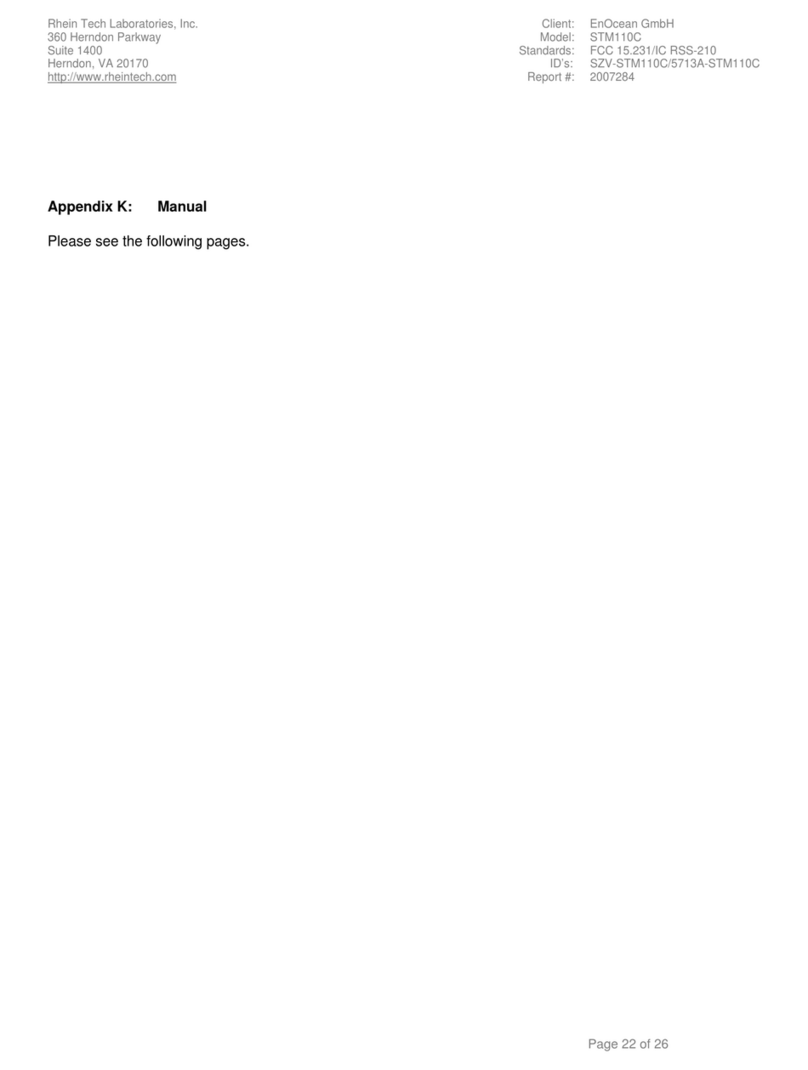
EnOcean
EnOcean STM110C User manual

EnOcean
EnOcean ESK 300 User manual
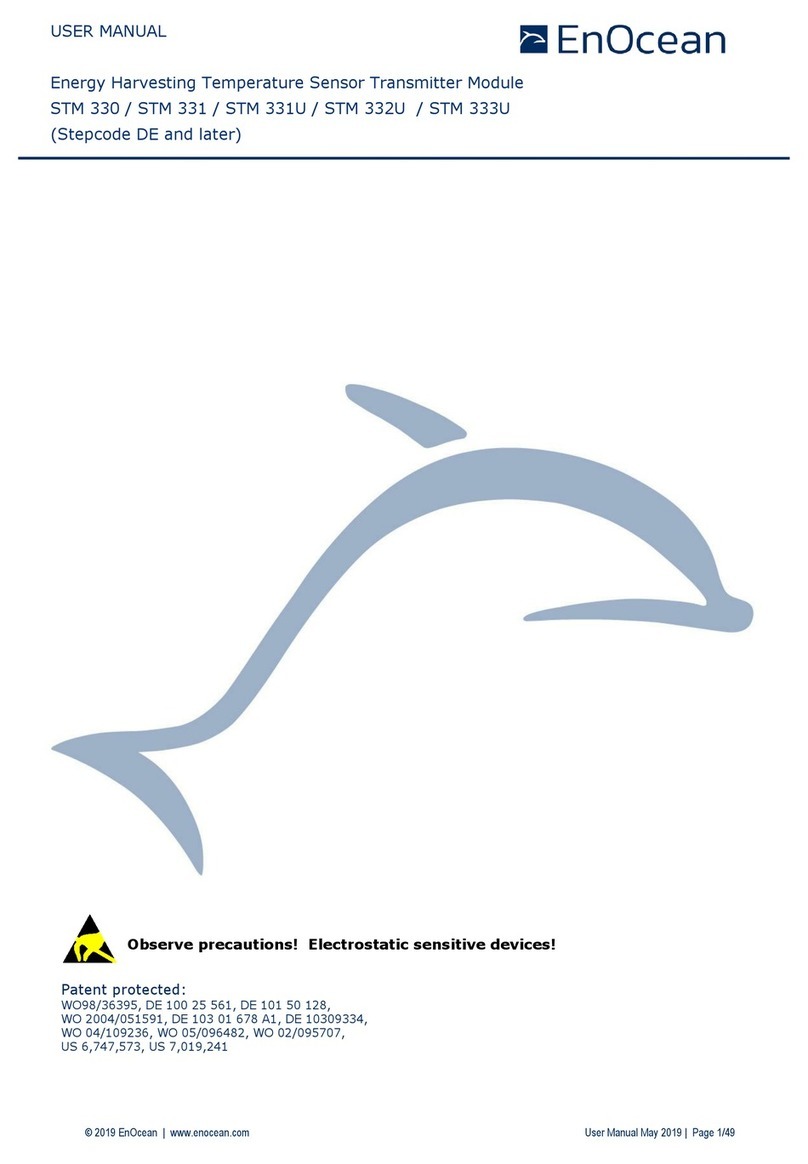
EnOcean
EnOcean STM 332U User manual
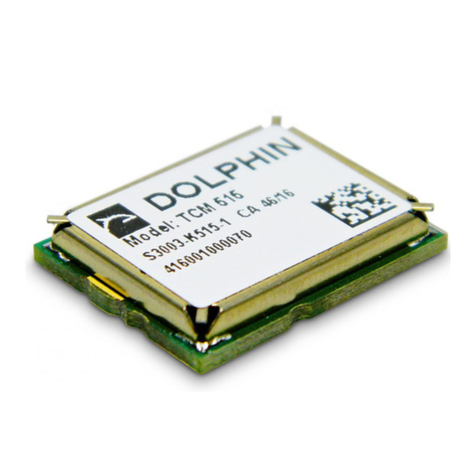
EnOcean
EnOcean TCM 515 User manual
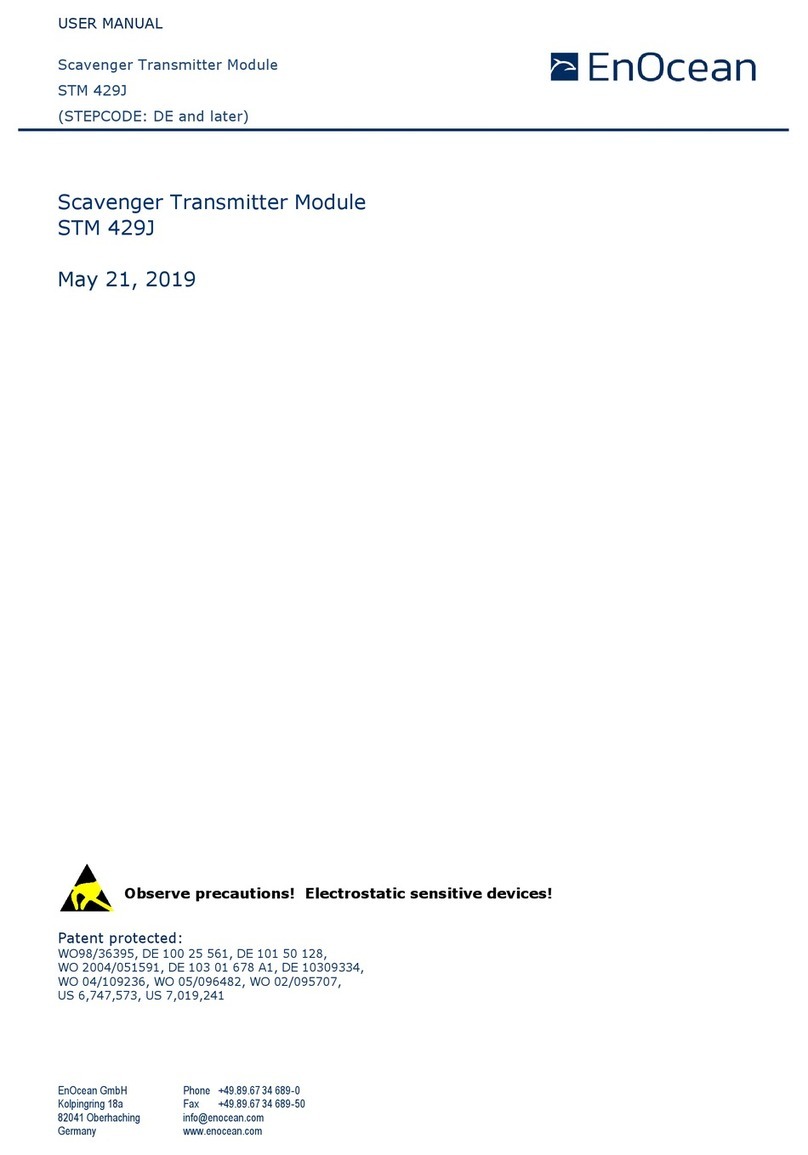
EnOcean
EnOcean Scavenger STM 429J User manual
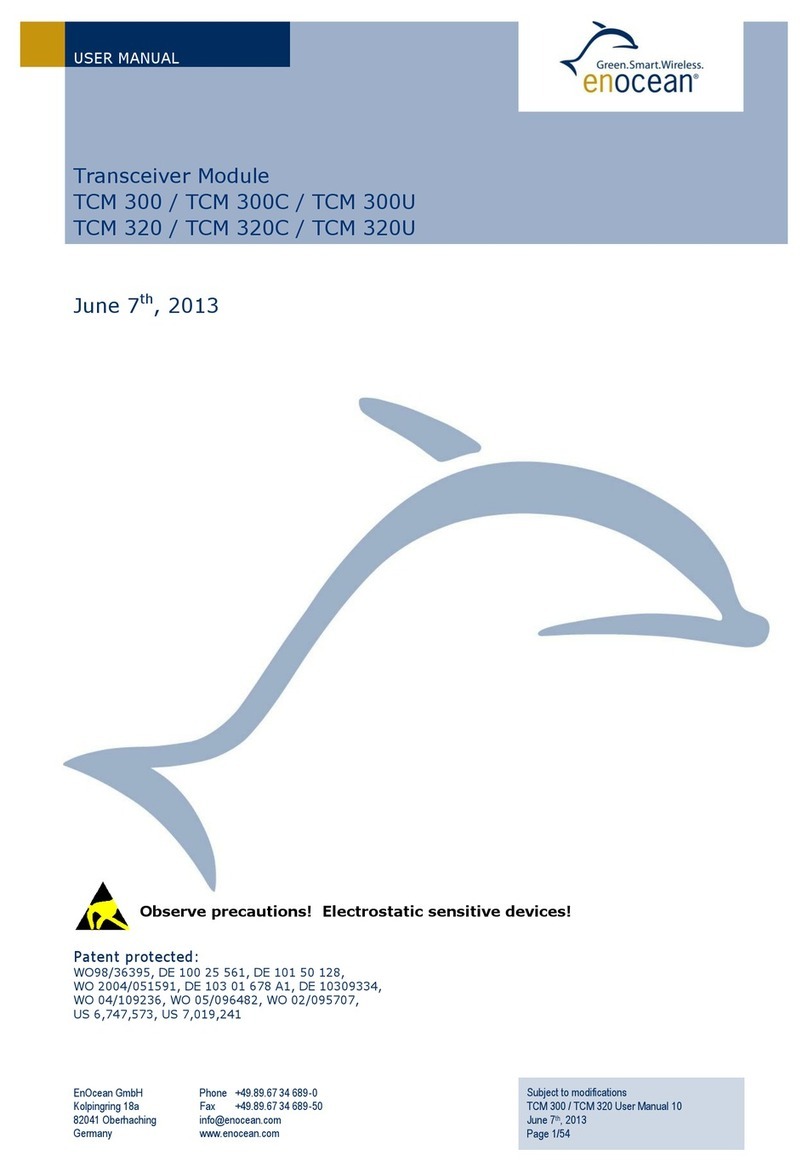
EnOcean
EnOcean TCM 300C User manual

EnOcean
EnOcean TCM 320U User manual
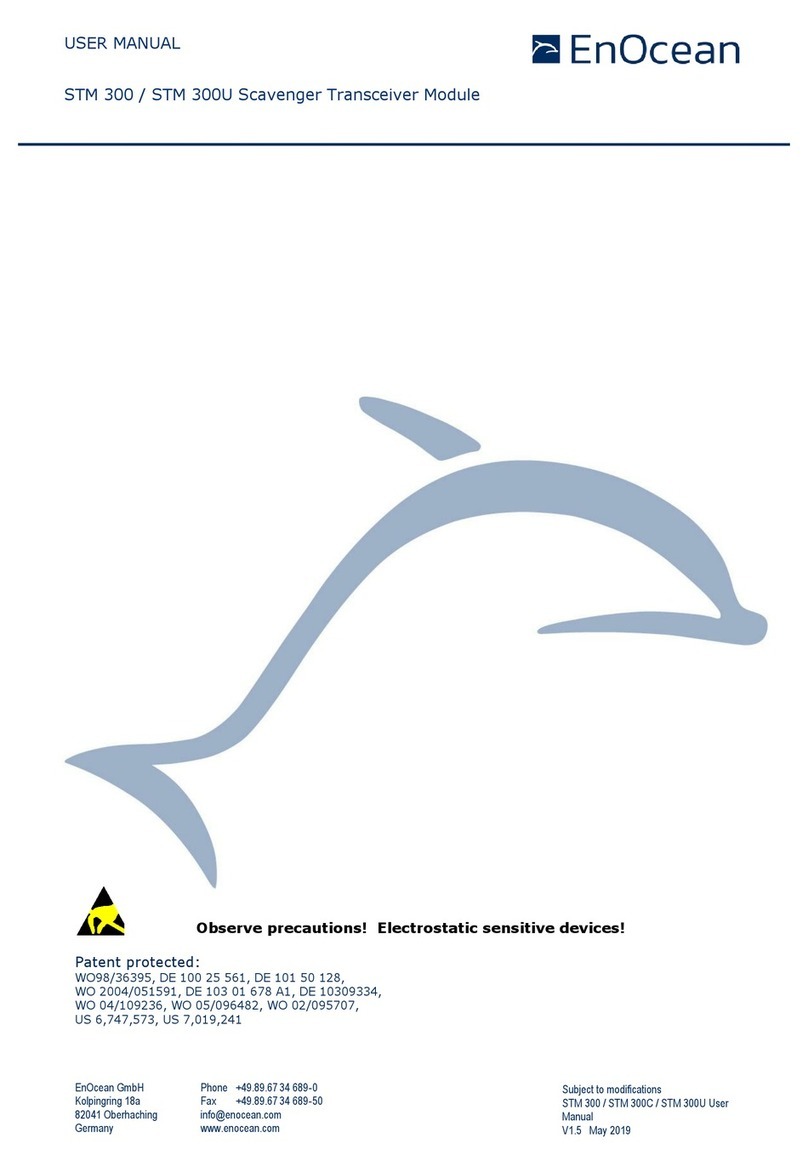
EnOcean
EnOcean STM 300U User manual
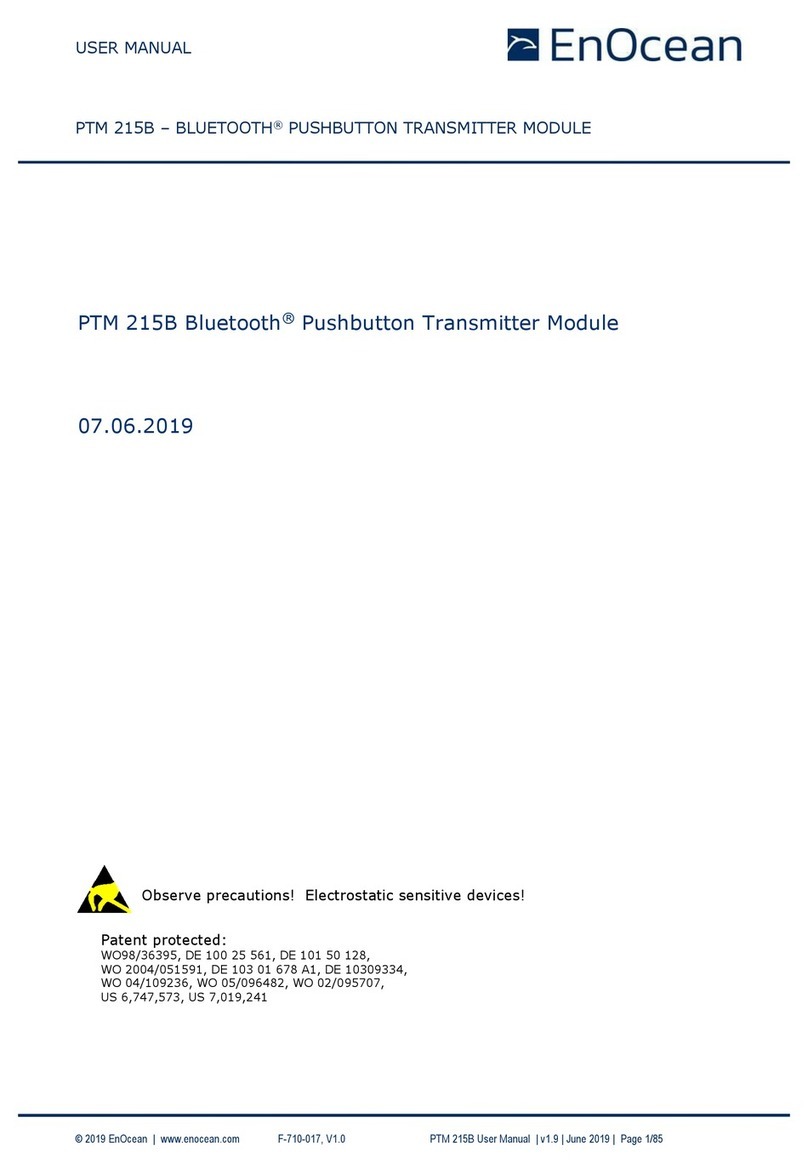
EnOcean
EnOcean PTM 215B User manual
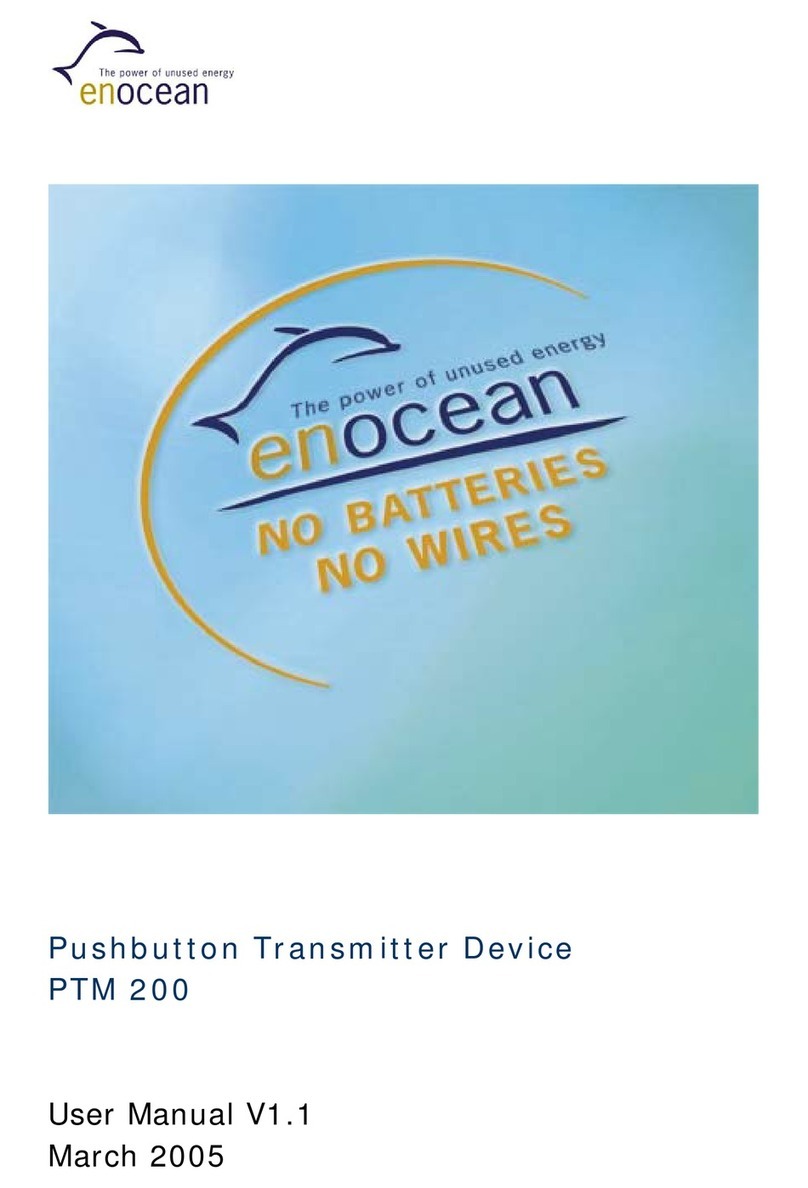
EnOcean
EnOcean PTM200 User manual
Popular Control Unit manuals by other brands
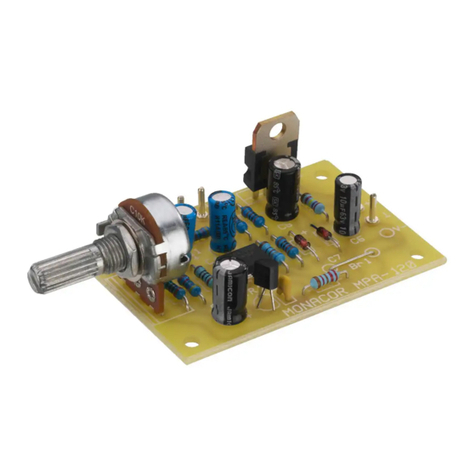
Monacor
Monacor MPA-1 quick start guide
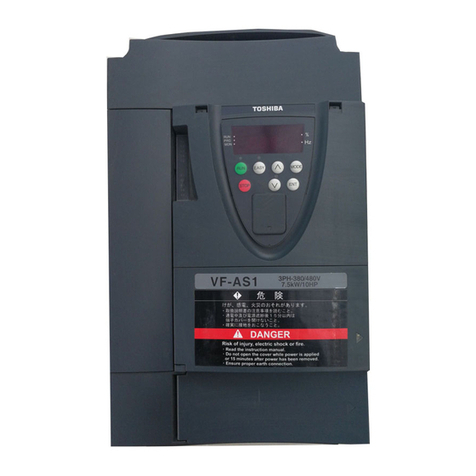
Toshiba
Toshiba TOSVERT VF-AS1 Series instruction manual
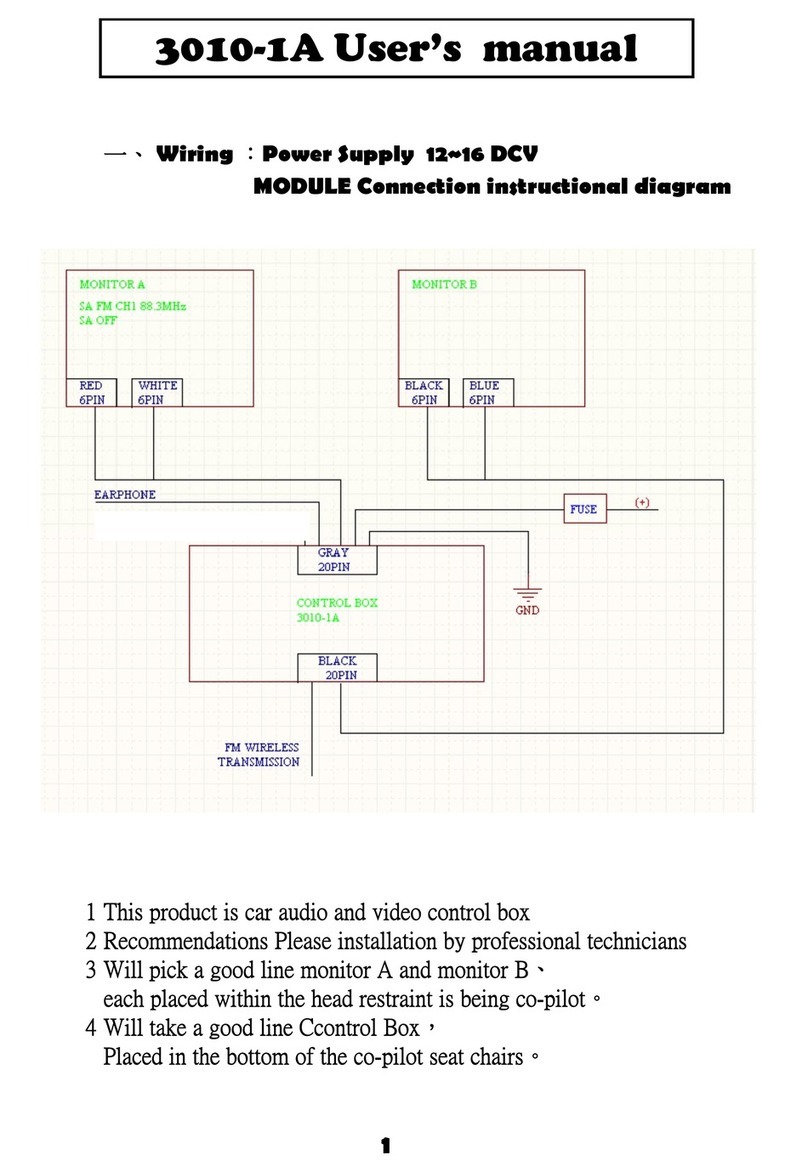
Giant Alarm System
Giant Alarm System 3010-1A user manual
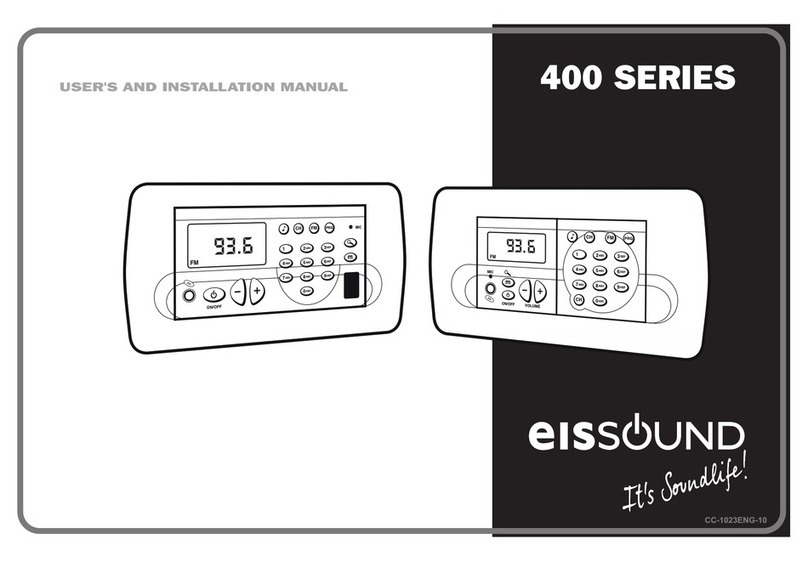
EisSound
EisSound 400 Series User and installation manual

Caltta
Caltta ZXIMCU PT01 P200 Operation manual

Anritsu
Anritsu MT1000A Network Master Pro Operation manual
